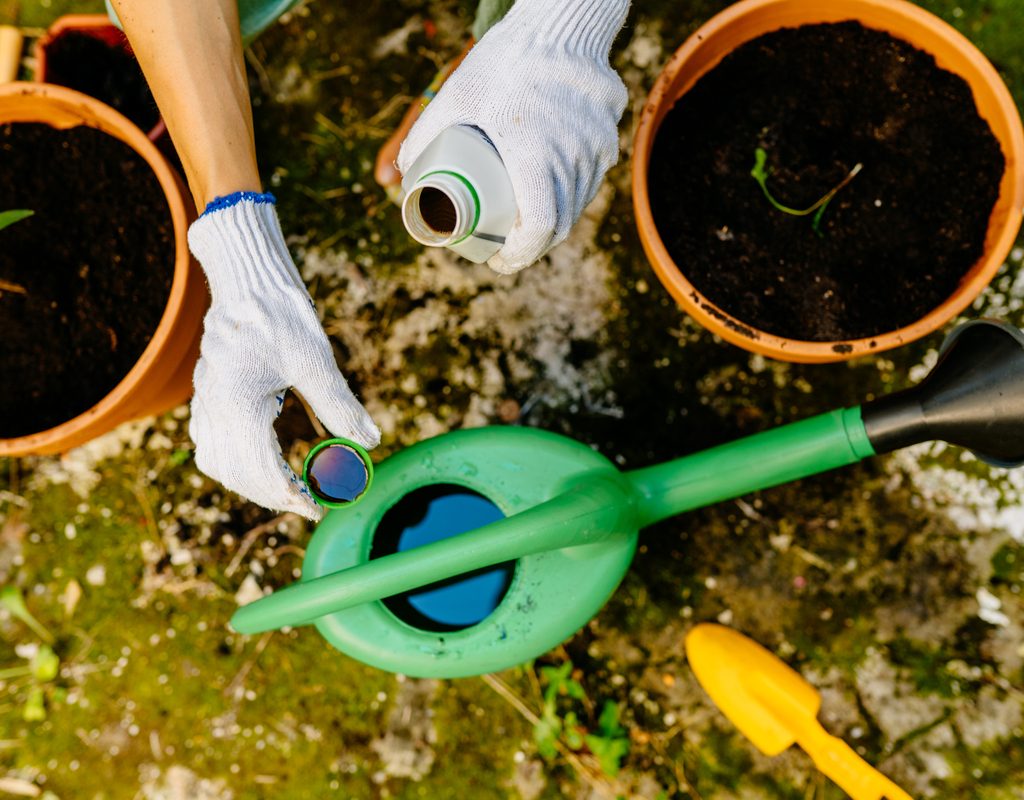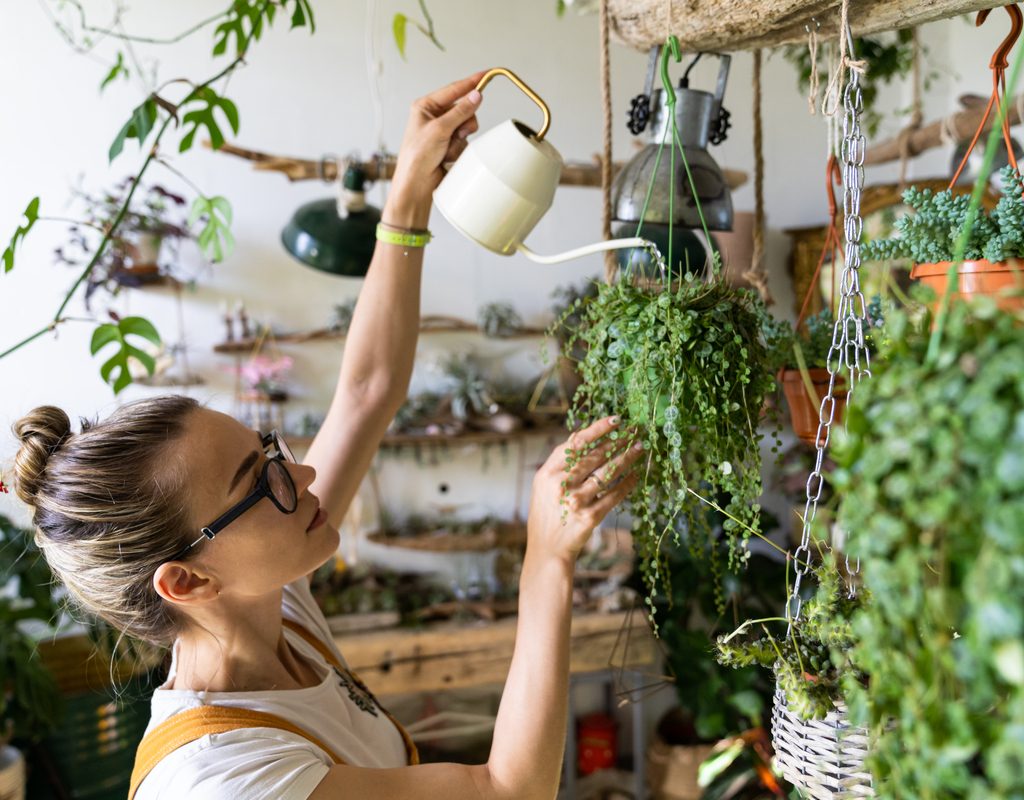
Plants need proper nutrition, just like all other living things. Of course they make their own food by photosynthesis, but they still require the raw building blocks that let them grow roots, stems, and leaves to make sugar out of sunshine and water. In nature, they scavenge their nutrients from the soil. But as potted houseplants, they only get what we give them. So, fertilizing indoor plants is pretty important.
The big three
The most important bit of information on a fertilizer label is the N-P-K ratio. More than any other substances, plants require the so-called macronutrients–– nitrogen, phosphorus, and potassium –– to live and grow. Nitrogen (N) is used for leafy growth. Phosphorus (P) promotes abundant roots, flowers, and fruits. Potassium (K) controls a variety of metabolic processes.
The N-P-K ratio, or guaranteed fertilizer analysis, is a set of three numbers that indicate the percentages of N, P, and K in the formula. For instance 5-10-5 fertilizer is 5 percent N, 10 percent P, and 5 percent K, by dry weight. If you’re following the math, you’ll notice that it doesn’t add up to 100 percent. The rest of the product is made up of other nutrients and non-plant-food ingredients. Those other ingredients are typically shown in detail on the back of the label.

How to feed indoor plants
Like other living things, plants aren’t happy when they’re hungry. They grow best when they have a consistent supply of nutrients to draw on, instead of infrequent heavy feedings separated by weeks or months without plant food. There are several ways to give them what they need.
Potting soil
Nearly all potting soils include a mild dose of slow release fertilizer. Don’t rely on this as a nutrient source for the long term. The small amount of plant food will be used up within a month or so. For long-term, reliable plant nutrition, feed your plants with regular applications of fertilizer.
Liquid
Liquid fertilizers are the most popular for house plants because they’re easy to use and deliver fast results. The concentrated liquid or water soluble granules are mixed with room temperature water, and the solution is used to water the plants. The benefit of using liquid plant food for indoor plants is that the nutrients are immediately available for the plant to absorb. The drawback is that any excess runs off and is wasted shortly after application. It doesn’t provide the slow, consistent feed mentioned above.
Sticks, spikes, pods, and tablets
These compressed fertilizer products are designed to break down slowly over time, providing an extended feeding time. The sticks, spikes, pods, or tablets are inserted into the soil at the plant root zone, where they gradually dissolve during watering over the course of weeks or months. The number of fertilizer units used is based on the size of the plant. These products are clean and easy to use, and provide a long, slow feed that plants need. But the nutrients don’t feed across the entire root zone of the plant. Because of this, some of the fertilizer is lost to leaching when water runs off.
Granules
Fertilizer granules are applied directly onto the soil surface, and lightly cultivated into the upper inch or so of soil. Granules are somewhat more difficult to control than other fertilizer products. They dissolve with water over a short period of time, usually a week or so depending on watering frequency, and require accurate measuring, so more tools are necessary. Although they’re inexpensive and effective, granules are often considered the least convenient option for house plant food.
Slow release
Also known as time-release plant food, these fertilizers release their nutrients at a consistent rate over an extended period of time, typically several months. On the surface, they appear not that different from granular fertilizers, but slow release plant foods really are a major upgrade.
A note on organics
Organic fertilizers are derived from composted, minimally processed plant and/or animal-based products. Soil-dwelling microbes must convert these fertilizer ingredients into elemental forms before the plant can take up the required nutrients. It’s an amazing, completely natural process, but there are a couple drawbacks. First, most potting soil is “sterile soilless mix” meaning that regular soil microbes aren’t present for organics to work efficiently (organics usually include some of the needed microbes). Second, the ingredients and processes may elicit an unpleasant aroma. Also, pound for pound, an equal amount of organic nutrients costs significantly more than non-organic.
A note on non-organics
Non-organic fertilizers are derived from chemical and mineral elements. The nutrients are delivered in a form that’s immediately usable by plants, regardless of whether the soil is sterile or not. These nutrients are significantly less expensive than organics. One point against non-organic fertilizer is that, since it’s more concentrated, it has a much stronger ability to cause fertilizer burn on plants if it’s applied incorrectly. It can also lead to a buildup of salts in the soil (but generally not if used as directed).
Whether you choose organic or inorganic, liquid or slow release, the most important part of using fertilizer is following directions. Just as inconsistent feeding starves plants, over fertilization kills plants and pollutes the environment (this includes excess fertilizer that flows down the drain). Avoid the temptation to feed the plant more to make it grow bigger; it doesn’t work that way. Always base fertilizer applications on the current size of the plant and the instructions on the fertilizer label. Your plants will thank you for it.


